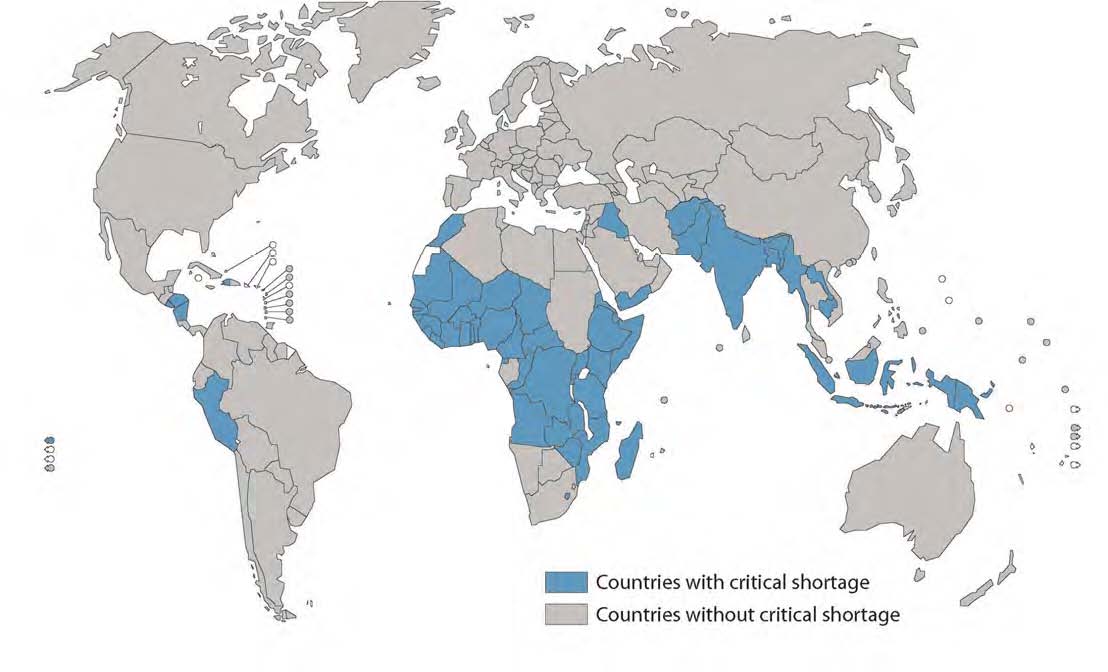Background
In 2006, the World Health Organization published The world health report 2006: Working together for health to highlight the global health workforce crisis. Building on prior work by the Joint Learning Initiative, the WHO determined that 2.3 doctors, nurses, and midwives per 1,000 people is the minimum threshold needed to adequately cover the population with essential health services. Unless countries met this threshold, they were unlikely to achieve the Millennium Development Goals (World Health Organization 2006). Using this standard and the total population estimates for each country in 2006, the WHO determined the threshold number of health workers needed and compared this value with the best available data on the actual number of health workers. This comparison resulted in 57 countries being identified as human resources for health crisis countries, since they did not have sufficient numbers of health workers to meet the threshold density ratio. Across these 57 countries, the health worker deficit was then estimated to include 2.4 million doctors, nurses, and midwives. As of 2010, none of the 57 crisis countries had reached the prescribed health worker density ratio (Global Health Workforce Alliance 2011). Thirty-six of these countries are in sub-Saharan Africa (Figure 1).
 |
|
Source: World Health Organization. 2006. The world health report 2006: Working together for health. Geneva, Switzerland: World Health Organization. http://www.who.int/whr/2006/en/ (accessed August 30, 2011).
|

